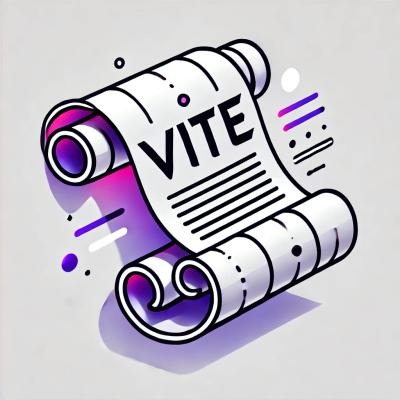
Research
Security News
Malicious npm Packages Target BSC and Ethereum to Drain Crypto Wallets
Socket uncovered four malicious npm packages that exfiltrate up to 85% of a victim’s Ethereum or BSC wallet using obfuscated JavaScript.
Craft simple regex-based small language lexers and parsers. Build parsers from grammars and accept Pygments lexers as an input. Derived from NLTK.
https://github.com/aboutcode-org/pygmars
pygmars is a simple lexing and parsing library designed to craft lightweight lexers and parsers using regular expressions.
pygmars allows you to craft simple lexers that recognizes words based on regular expressions and identify sequences of words using lightweight grammars to obtain a parse tree.
The lexing task transforms a sequence of words or strings (e.g. already split in words) in a sequence of Token objects, assigning a label to each word and tracking their position and line number.
In particular, the lexing output is designed to be compatible with the output of Pygments lexers. It becomes possible to build simple grammars on top of existing Pygments lexers to perform lightweight parsing of the many (130+) programming languages supported by Pygments.
The parsing task transforms a sequence of Tokens in a parse Tree where each node in the tree is recognized and assigned a label. Parsing is using regular expression-based grammar rules applied to recognize Token sequences.
These rules are evaluated sequentially and not recursively: this keeps things simple and works very well in practice. This approach and the rules syntax has been battle-tested with NLTK from which pygmars is derived.
"pygmars" is a portmanteau of Pyg-ments and Gram-mars.
This library is based on heavily modified, simplified and remixed original code from NLTK regex POS tagger (renamed lexer) and regex chunker (renamed parser). The original usage of NLTK was designed by @savinosto parse copyrights statements in ScanCode Toolkit.
pygmars is used by ScanCode Toolkit for copyright detection and for lightweight programming language parsing.
Why create this seemingly redundant library? Why not use NLTK directly?
NLTK has a specific focus on NLP and lexing/tagging and parsing using regexes is a tiny part of its overall feature set. These are part of rich set of taggers and parsers and implement a common API. We do not have the need for these richer APIs and they make evolving the API and refactoring the code difficult.
In particular NLTK POS tagging and chunking has been the engine used in ScanCode toolkit copyright and author detection and there are some improvements, simplifications and optimizations that would be difficult to implement in NLTK directly and unlikely to be accepted upstream. For instance, simplification of the code subset used for copyright detection enabled a big boost in performance. Improvements to track the Token lines and positions may not have been possible within the NLTK API.
Newer versions of NLTK have several extra required dependencies that we do not need. This is turn makes every tool heavier and complex when they only use this limited NLTK subset. By stripping unused NLTK code, we get a small and focused library with no dependencies.
ScanCode toolkit also needs lightweight parsing of several programming languages to extract metadata (such as dependencies) from package manifests. Some parsers have been built by hand (such as gemfileparser), or use the Python ast module (for Python setup.py), or they use existing Pygments lexers as a base. A goal of this library is to be enable building lightweight parsers reusing a Pygments lexer output as an input for a grammar. This is fairly different from NLP in terms of goals.
A pygmars.lex.Lexer creates a sequence of pygmars.Token objects
such as::
Token(value="for" label="KEYWORD", start_line=12, pos=4)
where the label is a symbol name assigned to this token.
A Token is a terminal symbol and the grammar is composed of rules where the left hand side is a label aka. a non-terminal symbol and the right hand side is a regular expression-like pattern over labels.
See https://en.wikipedia.org/wiki/Terminal_and_nonterminal_symbols
A pygmars.parse.Parser is built from a pygmars.parse.Grammmar and
calling its parse function transforms a sequence of Tokens in a
pygmars.tree.Tree parse tree.
The grammar is composed of Rules and loaded from a text with one rule per line such as::
ASSIGNMENT: {<VARNAME> <EQUAL> <STRING|INT|FLOAT>} # variable assignment
Here the left hand side "ASSIGNMENT" label is produced when the right hand side sequence of Token labels " <STRING|INT|FLOAT>" is matched. "# variable assignment" is kept as a description for this rule.
Based on a substantially modified subset of the Natural Language Toolkit (NLTK) http://nltk.org/
Copyright (c) nexB Inc. and others. Copyright (C) NLTK Project
FAQs
Craft simple regex-based small language lexers and parsers. Build parsers from grammars and accept Pygments lexers as an input. Derived from NLTK.
We found that pygmars demonstrated a healthy version release cadence and project activity because the last version was released less than a year ago. It has 3 open source maintainers collaborating on the project.
Did you know?

Socket for GitHub automatically highlights issues in each pull request and monitors the health of all your open source dependencies. Discover the contents of your packages and block harmful activity before you install or update your dependencies.

Research
Security News
Socket uncovered four malicious npm packages that exfiltrate up to 85% of a victim’s Ethereum or BSC wallet using obfuscated JavaScript.

Security News
TC39 advances 9 JavaScript proposals, including Array.fromAsync, Error.isError, and Explicit Resource Management, which are now headed into the ECMAScript spec.

Security News
Vite releases Rolldown-Vite, a Rust-based bundler preview offering faster builds and lower memory usage as a drop-in replacement for Vite.